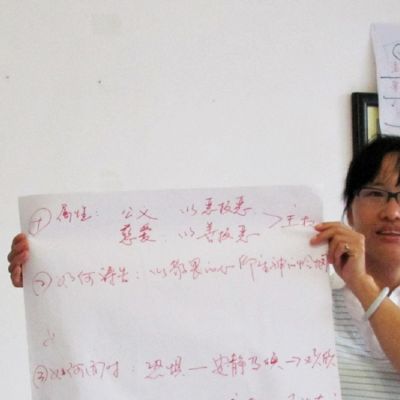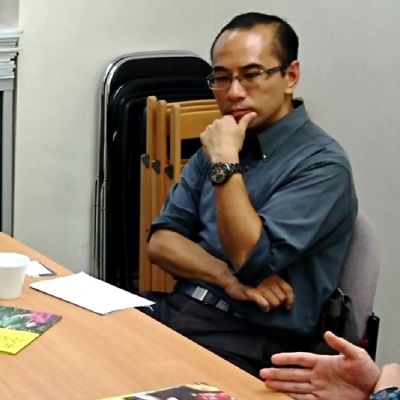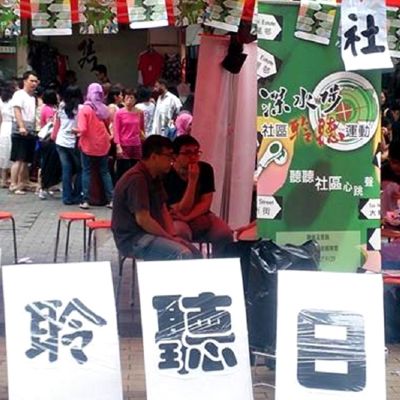Written and edited by: Tony Chan
To echo this issue’s theme: Church and Community Mobilisation, we interviewed three pastors who are heavily involved in caring and serving their communities. They are Rev. Anders Chan Ming-chuen (Associate Senior Pastor of Mongkok Baptist Church), Mr. Jonathan Au (Lecturer of Christian Ministry Institute; Deacon at Kai Tak Peace Evangelical Centre), and Ms. Teo Yun-sarm (Conference Parish Worker of The Methodist Church, Hong Kong). They share their experiences in mobilising the Church to serve the community.
It was an enriching conversation, touching on topics such as Gospel and social services, preaching social-related topics sermons, and advocating for justice. Though each of them had different views and approaches on social service, they all came to agree that the Church should be a public space.
A Private Club?
The change in Hong Kong’s social and political environment in recent years have prompted more people to pay attention to how churches are participating in social matters. Mr. Au urged us to think about the church’s role in the community. He shared with us an instance: when he invited a community member to join the church’s evangelical event, that person responded, “Why should I be bother to come to the event of your private club?” It was sad that the public has such an impression about the church. Mr. Au suggested that the Church should actually be a public space, a space given by God to the community, of which the pastors and believers are stewards of the space, where everybody are welcomed to come in and enjoy—this is the impression that he wished the society would have towards the church.
Mr. Au’s church operates a community centre that serves the local residents including Southeast Asian immigrants. He recalled that his church’s initial purpose was to spread the Gospel through social service; they later learned through serving more and more people that serving is, in fact, an important mission itself. He said there is a price to pay when the church opens its doors to the public, because more will be using the church facility. Their toilets were once heavily clogged and the sewer pipes cracked, water flooded his church, and church resources and staff’s books were destroyed. For the Church to become a public space, there is a price to pay, but it was well worth it.
Be Each Other’s Friends
“The most beautiful picture of the Church is not a gathering of similar people,” Rev. Chan said, echoing to the idea of a public space. He wished the Church could be a place that exercises social inclusion, where people of different race, class, and background could become friends and share freely. Not only could the wealthy give to the poor, but the poor could also support the wealthy in other ways, walking alongside each other as brothers and sisters in Christ.
When asked about his experiences in social services, Rev. Chan shared his vision and the things that kept him motivated. He said that after years of service, he became more aware of himself as a part of the society, and he stressed that despite his profession as a pastor, he did not see himself holding a higher status than the others. Conversely, he often learn from the people he serves, and is blessed by them. There was a time when he was chatting with a community member who has faced many difficulties in life. When Rev. Chan asked him if he had any friends who offer help, he paused and said, “You’re my friend Rev. Chan. Who else were there for me when these happened?” Rev. Chan could tell that he meant it from the heart through his teary eyes. Rev. Chan was deeply encouraged by this encounter, for this brother did not treat him by his seniority, but saw him as a common brother whom he walked alongside with.
Mobilising the Church
Great relationships between the Church and the community could never be achieved by only caring for those who decided to come inside the church. Ms. Teo highlighted it is important for brothers and sisters to be aware of their shared responsibility on serving the community. For example, taking care of newcomers is not just the responsibility of pastors and ushers, because we all share the ownership of the church space, it belongs to everyone who decided to come together and support each other. Ms. Teo hope that the church’s social responsibility will not solely fall on a specific group of people, and every member of the Church will share the same mission and participate in social ministry.
Connecting Faith with Social Responsibilities
Lastly, Ms. Teo pointed out that many brothers and sisters do care about social issues, and some of them are devoted social advocacies, but somehow they left the Church because they felt there is a lack of a spiritual perspective to look at current issues. How could the Church and its leaders help these believers to bridge the gap of faith?
Ms. Teo believed that spirituality has a significant role in social service, “I hope to help Christians to connect their faith with their participation in social matters.”
Mr. Au and Rev. Chan both hope there would be more messages about such connection in sermons. “The Church should include more social elements in sermons to provide church members spiritual perspectives on social issues,” said Mr. Au.
“I’m also struggled in the face of various controversies in the society,” said Rev. Chan who proceeded to assure fellow preachers that, “It is good to share your struggles honestly with the congregation—it is better than taking a specific stance—helping those who share the same struggle to understand that it is a reality that we will struggle when facing faith and society. This is an important part of pastoring.”
Mobilising the Church to participate in social ministry has always been a difficult task. We’re grateful for the fruitful discussion with the three pastors, and we pray that fellow pastors and church leaders would be encouraged by their sharing.
Content of this issue
Written and edited by: Tsun Wan Yan, Jojo Poon The act of poverty alleviation often gives the impression of aid workers carrying with them gifts of livestock and funds sponsoring children and their education to some remote villages. However, have you ever considered that the local churches are better suited in bringing continued and sustainable development and support to the people in need? To address the root causes of poverty for the poor, we must help the poor learn how to fish instead of relying on outsiders’ help. To prevent dependency on foreign aid, which would consequently hinder community growth, the average span of a development project is usually five to 10 years, and the development organisation will…
Written by: Pastor Daniel Ding During the past 10 years, the Church was able to integrate into the Chinese community through the government’s social service policy which encouraged non-profits to reach its residents. Yunnan was one of the pilot areas. Pastor Daniel Ding, Social Ministry Officer of Yunnan Christian Council, stressed that integration does not mean altering the truth we preach to fit in, but the challenge is to find a way to let our core values prevail. Pastor Ding is going to reflect on Isaac’s faithfulness described in Genesis 26:1-32 and his experiences in the Christian service scene in Yunnan, and let us see how God has always been with us as we serve our community. Isaac…
Banner image: As a peer educator, Taslima (middle) often catch up with other girls in the community to learn about issues they are facing Every individual has their rights despite their social status, age, gender, and education level. According to the United Nation’s Convention on the Rights of the Child, every child should have the rights to survive and thrive, to be protected, to participate and make their voices heard. In Bangladesh, where 90% of its population are Muslims and 10% are Hindus, the caste system plays a significant part in the lives of Bangladeshis. People are categorised into different castes, and people who belong to the lowest social status group in the caste system are the Dalits,…
Written and edited by: Tony Chan To echo this issue’s theme: Church and Community Mobilisation, we interviewed three pastors who are heavily involved in caring and serving their communities. They are Rev. Anders Chan Ming-chuen (Associate Senior Pastor of Mongkok Baptist Church), Mr. Jonathan Au (Lecturer of Christian Ministry Institute; Deacon at Kai Tak Peace Evangelical Centre), and Ms. Teo Yun-sarm (Conference Parish Worker of The Methodist Church, Hong Kong). They share their experiences in mobilising the Church to serve the community. It was an enriching conversation, touching on topics such as Gospel and social services, preaching social-related topics sermons, and advocating for justice. Though each of them had different views and approaches on social service, they all came…
Written and edited by: Tsun Wan Yan The Church’s role in Hong Kong’s social development dates back to early missionary times. However, in recent years, churches in Hong Kong were often accused of being absent from major social discussions, except issues that spiked its interest. For this issue’s “TAKING ACTION” section, we interviewed the Organiser of the social organisation, HK Citizens, Daniel Man, and asked him how they mobilise churches to respond to current issues through Community Organising. The Beginning: Non-profit Work in England HK Citizens oragnises community to work together for common good, which involves mobilising churches to bond with their communities. And this is not something new to Daniel. Daniel started off as a social worker…







